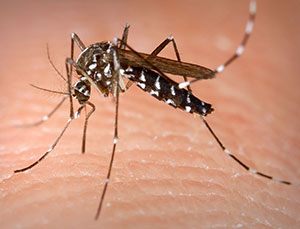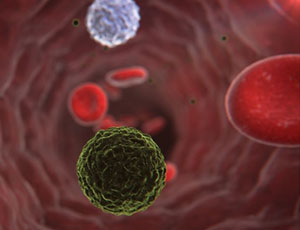 By Bryan Lin, PhD Student in Pryzdial Lab, CBR
By Bryan Lin, PhD Student in Pryzdial Lab, CBR
In Canada and the US, more than 4.5 million patients require blood transfusions each year. In order to address the public concern over a reliable and safe blood supply, the agencies governing blood collection and blood product manufacturing (e.g. Canadian Blood Services and Héma-Québec in Canada) have implemented rigorous donor screening and routine product testing. Blood-borne pathogens that have a rising incidence and geographic range in these past few decades are known as emerging pathogens. In this article, I will be addressing how emerging pathogens and increased international travel volume challenge the safety of our blood supply and what measures are taken to mitigate these risks.
We can only test for what we know – the reactive strategies of pathogen identification, testing development, and screening allows the emerging pathogen to distribute widely before clinical presentation is recognized and understood; such was the case for HIV in the 80’s. Moreover, there is a cost-benefit analysis for every pathogen the blood operator tests for. Currently, there is only a small number of pathogens that are being tested, such as Hepatitis B and C, HIV-1 and -2, HTLV-1 and -2, and Syphilis (Treponema pallidum). However, there are more than a hundred blood borne human viruses that are not screened, some of which are transmitted by mosquitos. These viruses can remain in the host’s bloodstream for a few days, with the most prevailing being dengue virus. Dengue virus (DENV) affects 2.5 billion people over more than 100 countries, with nearly 400 million infections a year.
DENV infections can progress from dengue fever into the more severe hemorrhagic fever or dengue shock syndrome. In 75% of cases, few to no symptoms are seen, so an asymptomatic person may donate infected blood. Given the high volume of annual infections and that blood products are not screened for DENV, there exists a transmission risk via transfusion. The Pryzdial lab, at the Centre for Blood Research, demonstrated that DENV does persist in stored platelets and red blood cell units1. Although the virus is not endemic to Canada, travel has increased the risk of dengue virus, as well as other pathogens reaching our blood supply. To date, five cases of transfusion-transmitted dengue infection have been documented in North America, but as dengue virus infections can be asymptomatic, actual infections are unknown2. The danger of a first exposure to DENV lies in a secondary infection by a different serotype of dengue virus. The phenomenon known as antibody-dependent enhancement allows the virus to more effectively infect macrophages, resulting in a severe disease progression.
Donors that have travelled to areas endemic to several blood-transmissible diseases may pose a risk to our blood supply. Plasmodium malariae, the culprit behind the blood disease malaria, affects many regions of Africa. To protect our blood supply, donor screening inquires about the donor’s health, travel and other habits. In the case of malaria, those who have been exposed to a malaria risk are deferred from giving blood for one to three years. On top of that restriction, the CBS only uses plasma rather than the red blood cells and platelets, even from fully recovered individuals, as the pathogen may persist in the cells.
Donor and blood screening are not perfect, as some donors may be unaware of asymptomatic infections, such as in the case of dengue virus. Furthermore, as travel and global warming increase, the endemic regions of known or unknown pathogens will change, thereby increasing the overall risk to our blood supply. A promising alternative to the high cost and intensive blood screening is pathogen inactivation (PI) technology.
PI technologies destroy the pathogen’s ability to persist in blood products. Recently, the US Food and Drug Administration (FDA) has approved the use of amotosalen and UV light treatment of platelets and stored plasma units, thereby preventing most pathogens from replicating and persisting in the units3. The plasma and platelets are then purified to remove the chemicals and its byproducts. Although the treated plasma and platelets have higher cost and may have lower quality than untreated, a more reliable and safe blood component supply may outweigh the downside.
Emerging pathogens are a risk to the global blood supply and travel and global warming may increase the risk to North America. Pathogen inactivation will join donor screening and blood product screening in eliminating pathogen risk to our blood supply. Altogether, the confidence and safety of our blood supply will be improved.
1 Sutherland MS, et al. Transfusion Medicine Reviews 2014; 28: 167–168; 2Pozzetto B, et al. World J Virol. 2015; 3 McCullough J, et al. Blood 2004; 104: 1534-41




